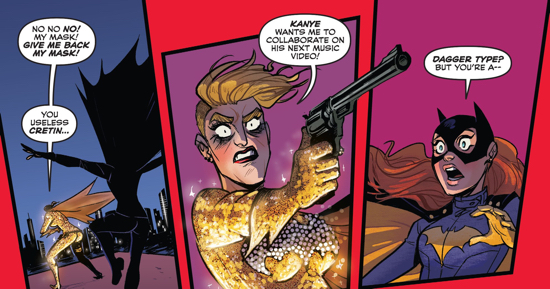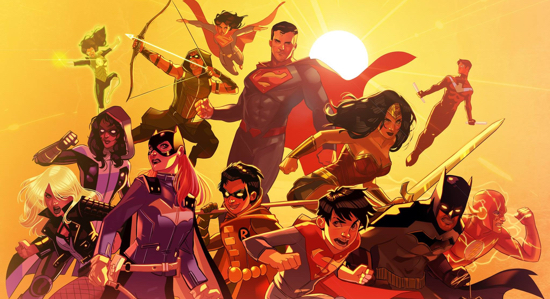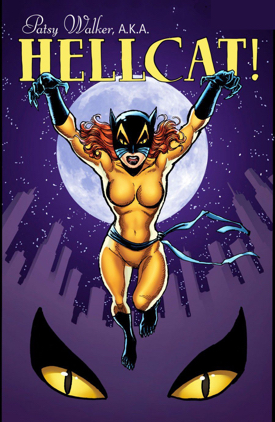Joe Corallo: Critical Thinking
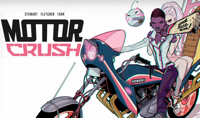 Last week I picked up a copy of Motor Crush #1, the new Image comic with all the buzz, created by the team that brought us the Batgirl of Burnside, including Brenden Fletcher, Babs Tarr, and Cameron Stewart. Part of what motivated me to pick up this comic was the report at Bleeding Cool that some retailers admitted that they did not order Motor Crush for their stores because they didn’t think their customers would buy a new comic with a black female lead.
Last week I picked up a copy of Motor Crush #1, the new Image comic with all the buzz, created by the team that brought us the Batgirl of Burnside, including Brenden Fletcher, Babs Tarr, and Cameron Stewart. Part of what motivated me to pick up this comic was the report at Bleeding Cool that some retailers admitted that they did not order Motor Crush for their stores because they didn’t think their customers would buy a new comic with a black female lead.
I got around to reading this comic a few hours after picking it up, and it really was a good, fun time. We follow the sci-fi adventures of racer Domino Swift as she fights biker gangs and the world around her of both legitimate and illegal racing is fleshed out before us. Other than perhaps getting a little lost reading one or two of the action sequences, it was a smooth and enjoyable read.
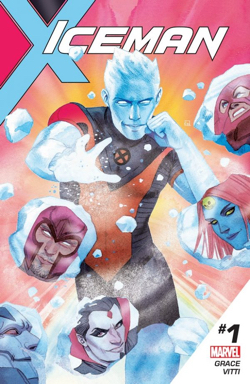 There is one thing about the book that stands out to me though.
There is one thing about the book that stands out to me though.
No one attached to the book is black. The entire creative team and the editor, Jeanine Schaefer, are white. The letterer, Aditya Bidikar, is Indian which is important as we don’t have enough Indian voices in Western comics. This does, however, leave the book without a single black voice attached.
Is that important?
It can be for a few reasons, one of which is related to how comics compares to other media. In prose, you’re often dealing with an author and an editor so you have little room to add more voices. When it comes to television and film, you have much larger groups of people working on them and the characters are played by real people. Maybe the creators are all white, but if the characters are black, they’re played by real people who can be admired and idolized who can benefit from that in their careers and inspire other people to be actors. In comics, particularly mainstream American comics, you can easily end up with teams of between four and a half dozen or more working on a single story. If a team that isn’t black is making a comic with a black protagonist you have a situation where only non-black creators are making financial and professional gains from a book while many black and other marginalized creators aren’t getting the same levels of press and encouragement.
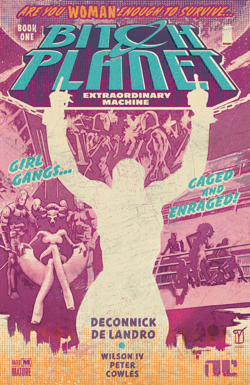 Is that what we want? It’s worth pondering.
Is that what we want? It’s worth pondering.
Also worth considering: this team in particular is the same team that was involved in the horrifyingly transphobic and misguided Batgirl #37. That issue is so infamous to me I didn’t even have to look up the issue number; I just know it. The team created a terrible villain using dated trans tropes that disgusted me to the point where I didn’t read anymore of that Batgirl run until issue #45 to read Alysia’ Yeohs wedding – and that wasn’t enough to bring me back in. The damage was done.
The team apologized for the events of issue #37 and the collected edition was edited to remove some of the most damning content. Do I believe we have to chase every creative team out of comics who make big mistakes like this? Absolutely not. However, that doesn’t mean I’m going to trust that creative team with handling certain characters outside of their own experiences. Sometimes it’s important to have a team with people from a community you want to do a comic about to avoid a Batgirl #37 situation.
To a lesser extent, but with more consistency, we saw this happen with Iceman in different X-Men comics the last couple of years. I’ve been critical of how Iceman has been handled by Bendis as well as Lemire and Hopeless. Now Marvel is moving in a new direction with Sina Grace, a queer man, at the helm on the new Iceman solo series. Though the series isn’t out yet, I’m familiar with Sina’s other comics works and this seems like a step in the right direction.
There are also examples of comics that do have representation on the teams that have been wildly successful. Another title at Image, Bitch Planet, has been a big hit. Though Kelly Sue DeConnick is mostly writing women of color, her co-creator is Valentine De Landro, a black creator whom I’ve been a big fan of since his tenure on Peter David’s X-Factor, and the two of them together pulling from their own knowledge and experiences have crafted a brilliant comic that towers above most of what you’ll find one the shelves and spinner racks. Without a black voice behind Bitch Planet we might be getting a very different book that could easily be missing those high notes.
While I do believe it is important to have at least some representation in your comic of the people you’re writing about, it’s still possible to put out a good comic without that. Motor Crush #1 is a fun read and is worth considering. If supporting black characters in comics is important to you, definitely give this a chance. If supporting women in comics is important to you, Babs Tarr and Jeanine Schaefer are worth supporting. If supporting creators of color is important to you, you’re gonna have to look elsewhere.


